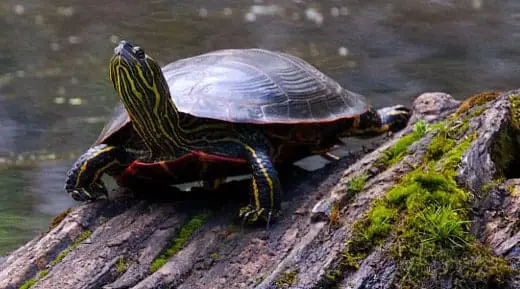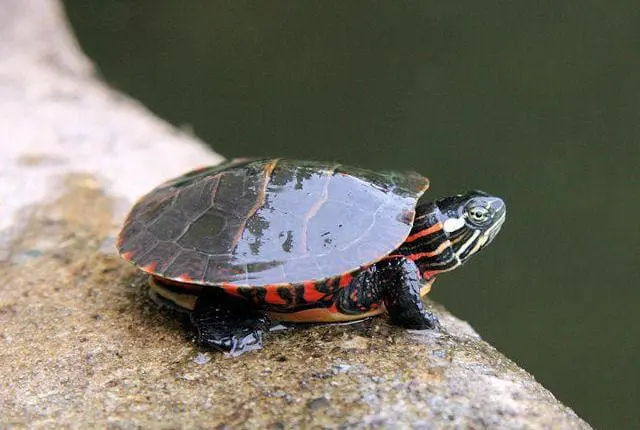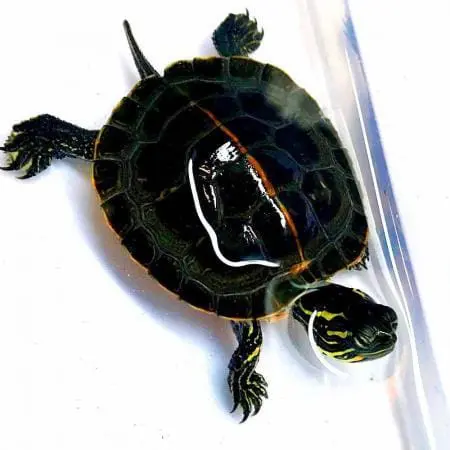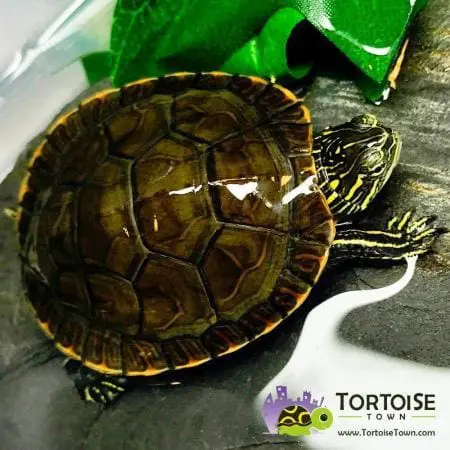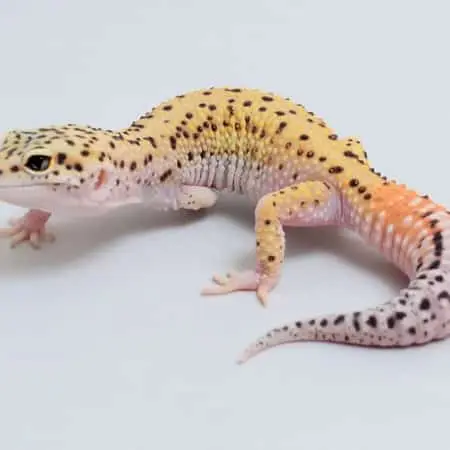Painted Turtle Care Sheet
Before purchasing your new painted turtle for sale, consider what type of painted turtles for sale you would like to purchase. There are quite a few including the most popular eastern painted turtle for sale, western painted turtle for sale, or southern painted turtle for sale. Since Eastern painted turtles are illegal in some states where they are indigenous it makes sense to purchase Western painted turtles for sale if you’re located in the East and an eastern Painted turtle for sale if you are located in the West, or Central areas of the USA. Consider purchasing only captive bred baby turtle for sale, whether it be a box turtle for sale, or aquatic turtle for sale from a reputable turtle store or painted turtle breeder like Tortoise town!
The painted turtle is an aquatic turtle species most commonly found in and around slow moving bodies of water. There are quite a few species of painted turtles in the united states and all are beautiful.
There are four different subspecies of painted turtle, each of which is geographically based and all of which are native to North America. These are: the Eastern Panted turtle, C. p. picta, the Midland Painted turtle, C. p. marginata, the Western Painted turtle, C. p. belli, and the Southern Painted turtle, C. p. dorsalis.
PAINTED TURTLES SIZE
Painted turtles grow to an average shell size (called a carapace) of around 12 inches, with the female western painted turtles reaching an average size of one foot. Generally, female painted turtles grow to be larger than their male counterparts. On the smaller end of the painted turtle spectrum is the southern painted turtle, which grows to a size of just 5 inches. Turtles in general will grow to fit the tank they’re housed in—which does not mean they will grow forever in a large set-up. It makes sense to plan ahead of time so you have proper space for your new friends.
PAINTED TURTLE LIFESPAN
When provided with a proper diet and care, painted turtles can live for 25 to 30 years, with some of the oldest living to be nearly fifty years old!
PAINTED TURTLE APPEARANCE
Eastern painted turtles have a distinct glossy black carapace (shell), often marked with red along the edge. The seams that divide each scute (piece of shell) line up perfectly from row to row in the eastern painted turtle and their underbellies are a uniform yellow color. They also have thin yellow and red lines on their skin, separated by thicker black areas.
The midland painted turtle is similar in appearance to the eastern painted turtles, but its seams are staggered and it has a dark region in the center of its underbelly (plastron).
Western painted turtles are lighter than other types of painted turtles and they tend to have olive colored carapaces and larger dark areas on their plastron than midland painted turtles.
And finally, the southern painted turtle, which is the only variety of painted turtle to have a solid yellow stripe running down the middle of its carapace. Southern painted turtles also have solid yellow plastrons.
PAINTED TURTLE CARE LEVEL
Painted turtles make excellent pets for beginners to advanced hobbyists due to their docile nature. But, because they are more care-intensive than pet mammals, and due to their lengthy lifespans, you’ll want to give it some consideration before making the purchase. Another aspect to note when considering any type of pet turtle is that most reptiles carry salmonella, so proper hand washing and hygiene must be exercised at all times.
PAINTED TURTLE DIET
Feeding Your Painted Turtle
Painted turtles are good eaters and enjoy feeding on a variety of foods. Adult turtles should only be fed once every two to three days or so; daily feeding will cause them to become overweight.
Painted turtles are omnivores, meaning they enjoy eating meat as well as plant matter. You’ll want to vary your turtle’s diet even if it prefers eating only one type of food. This is important for supplying your turtle with all of the vitamins and nutrients it needs to live a healthy and happy life.
As far as vegetable matter goes, you can feed your painted turtle romaine or red-leaf lettuce (never iceberg), chopped mixed veggies, and collard greens. As for meat, you’ve got a few options: small feeder guppies, various insects and earthworms, pieces of chopped beef heart, cooked chicken pieces, and even low-fat dog food. The key to a good painted turtle diet is variety.
Supplements
Aside from plants and proteins, your painted turtle will require periodic supplementation with vitamins and calcium. This can be achieved by giving your turtle a calcium block to nibble on and by occasionally feeding it commercially bought turtle pellets.
Feeding Tips
A small tip when it comes to feeding your painted turtle: use a container! For just about everything other than placing live fish in the water, you should feed your turtle in a container that is separate from its living and swimming spaces. This will make it so that you don’t have to clean the habitat after every feeding. Trust us, turtles are messy eaters.
PAINTED TURTLE HEALTH
Painted turtles are only as healthy as their enclosures; most common illnesses and health problems can be attributed to dirty habitats and/or improper nutrition. Otherwise, painted turtles are a hardy bunch.
Things to look out for that may signal health issues are significant weight changes (monitor your turtle by weighing it every month), swollen eyes or open wounds on the skin (this signals a lack of calcium and/or Vitamin D3; see the sections on Diet and Light, respectively), difficulty breathing, bubbles coming from the nose, and an inability to swim or breathe properly in water.
If your painted turtle is suffering from any of the above-mentioned symptoms we recommend contacting your dedicated herp vet immediately. Hopefully you made contact with your local herp vet when you brought your painted turtle home. Remember, it’s always better to have a reptile veterinarian before you need one.
As with other reptiles, painted turtles carry salmonella, so they should never be allowed to roam through your home freely. To avoid being infected with the salmonella bacteria, proper hand washing should be practiced at all times. Although anyone is at risk for salmonella infection, this is especially important in homes with children, elderly, or for people who have compromised immune systems (e.g., those undergoing cancer treatment). It is a good rule to always clean your hands after touching your turtle, its environment, or any of the furnishings you keep for your turtle, such as feeding dishes or shelters.
PAINTED TURTLE BEHAVIOR
Aside from the occasional shoving match to get the best basking spot, painted turtles are a docile bunch. They aren’t as jittery or nervous as other species of turtle, like map turtles, but they do enjoy a little solitude from time to time. The majority of painted turtles’ days are spent basking in the sun, foraging for a midday meal, and then retiring early. Painted turtles tend to be a bit more active when feeding,
SUPPLIES FOR YOUR PAINTED TURTLE’S ENVIRONMENT
Housing Your Painted Turtle – Habitat or Aquarium Setup
Whether or not you want to house your painted turtle outside or inside, there are a few basic characteristics every suitable turtle enclosure needs: adequate space, light and heat, and water.
When it comes to the size of your painted turtle home, bigger is always better.
Water
Painted turtles love to swim and need to have access to clean water, both for drinking and for swimming in. Provide a water area that’s at least four times the size of the turtle, at a depth of at least 1.5 times the turtle’s length. A reasonable sized painted turtle tank would be 36 to 48 inches (91.4 to 121.9 cm) wide and at least 12 inches (30.5 cm) deep. This provides enough swimming room without posing an accidental drowning issue. If the water is too shallow, your turtle may injure itself when diving.
If you’re keeping multiple turtles in one enclosure, increase the given dimensions by 25 percent for each additional turtle. A general rule of thumb is a minimum of 20 gallons of water for one painted turtle, and an additional 10 gallons for each additional turtle. Remember, this is just a minimum, more is always better. This will give them plenty of space to move around.
If you are keeping your painted turtle in an outdoor habitat, you might consider creating a real miniature pond inside your turtle enclosure. Pond liners can be found in many pet supply stores and online, and you can decorate the pond with real or fake plants, stones, and even real fish—which also make for a wonderful fresh food supply for your turtle. Make sure that are places around the pond where your turtle can easily climb in and out of it. Also, locate the pond in a shaded spot to prevent the water getting too hot, and clean the water daily, either with a water vacuum or filter pump.
Light
Painted turtles take in a lot of sunlight in their natural settings. This is important because sunlight is a primary source for Vitamin D3. That is, the UVB rays in direct sunlight cause the body to synthesize cholesterol in the body, creating Vitamin D3, which has a direct impact on metabolism and calcium balance.
If you are going to be keeping your painted turtle indoors for much of the time, you’ll want both incandescent and fluorescent lights. Incandescent lights are used to light and heat certain parts of the tank and should be set up above the basking areas. Take care to keep a thermometer at the basking site to prevent the area from overheating.
Fluorescent lighting provides the overall light level and should be provided for painted turtles. A source of ultraviolet (UV) light is strongly recommended for the overall health of painted turtles. Use a UVB light to help supplement your pet turtles with Vitamin D3, arranging the light in a way that the light is not blocked by a layer of glass, plexi-glass, or plastic, as UVB rays cannot pass through these materials and the beneficial wavelengths will be blocked from reaching the turtle’s body.
Heat
Temperatures that are comfortable to the average human are way too cold for painted turtles. Painted turtles, like other reptiles, are ectothermic, meaning they warm their bodies using external sources of heat. Supplemental heat can be provided in the form of an undertank heater or submersible water heater. No matter which type of heater you choose, you’ll need to monitor the temperature inside the enclosure with digital thermometers to prevent the water from overheating. A best practice is to pair electronic thermometers with alarms that go off if the temperatures drop (or go to high), this way you can be sure proper temperatures are maintained.
Shelter and Basking Spots
Even though turtles come with their own built in shelter, they still need a physical place to hide away securely. You can create an underwater hiding spot using either real or fake plants, but take care that your turtle will not get trapped in the spot as there is a risk of drowning. The plants will need to be checked and replaced periodically as well.
If your turtle’s habitat is outside, make sure that at least one area is open to the sun. Painted turtles love the sun, so they need a spot that is totally out of the water, where they can haul themselves out to dry off and get warm. Driftwood, corkboard, and smooth flat rocks all work well, just make sure you use something your turtle won’t scratch its shell on. If your turtle habitat is indoors, place a UVB spotlight over this area to enable your turtle to bask there.
Decorations
Aside from a spot to dry off, painted turtles don’t require any other sort of tank decoration, though some turtle keepers think a plain tank looks much too sterile. Turtle safe plants will create a pleasing environment, but keep in mind that anything you place in the tank will need to be regularly cleaned or replaced. Rocks and pebbles can also be used for effect, but size is a consideration. Gravel that can be swallowed can cause digestive issues for your painted turtle, so choose a substrate that is too large to be taken into the mouth, or so small that it will pass through your turtle’s digestive system easily. If in doubt, seek advice from your local herpetoculture expert.
PAINTED TURTLE HABITAT AND HISTORY
The painted turtle is found almost exclusively in the United States, with some of the northern varieties edging into Canada. Eastern painted turtles are found along the eastern seaboard, midland painted turtles are native to the area east of the Mississippi River, western painted turtles span the U.S. and lower Canada from the Midwest to Washington, and the southern painted turtle spends its time in Illinois, Missouri, and areas south down to the Gulf Coast.
Painted turtles are a lazy bunch; they prefer to spend their days basking in the sun and floating down slow-moving lazy rivers. While most painted turtles prefer warm weather, some of the northernmost species of painted turtle are cold resistant and have even been spotted swimming under ice floes.


